
Bird Page for Chile
The landscape in Chile for the most part is desert. In many parts of the Atacama desert, there is no vegetation whatsoever. Other areas have just clumps of Festuca grass.
Some of the higher peaks have snow cover. Many of the mountains are of volcanic origin, some of them still have plumes of water vapor from geyser activity.
The Geysers del Tatio area is the highest active geyser field in the world, at an altitude of 4,200 m (13,780 ft). The tours to Geysers del Tatio leave the hotels in San Pedro de Atacama at 4:00, reportedly because of the nice sunrise at the geysers. The real reason is that the geysers are mostly not geysers, but hot spring vents. The humidity condenses in the cold night air to form the plumes. As soon as the sun rises, and the temperature increases, there is much less condensation. During the day there is nothing to see there, the plumes completely disappear. That is the reason why the tours visit there at night. If you go on that tour, make sure you have warm clothes and gloves. I froze my tush off, it was about -15°C (5°F).
I visited several lagunas in the Atacama desert. The difference between a lake and a laguna is that a lake has an outflow, whereas a laguna does not. Because of this, lagunas are generally very salty, since the minerals keep accumulating with time, since no water ever flows out of the laguna. These lagunas are ideal habitat for flamingos, who live on the brine krill that lives in the salty lagunas.
Larger flora in the Andes is mainly desert vegetation like cacti and other similar plants, if there are any plants at all. Vast expanses in the Andes are devoid of any vegetation.
For fauna you see mostly birds. The flamingos are especially noteworthy. For mammals, I saw one fox, a South American Gray Fox (Lycalopex griseus, german: Argentinischer Kampfuchs, french: Renard gris d'Argentine). As far as larger animals are concerned, I definitely wanted to see Vicuñas and Guanacos. Both are camelids, they look quite similar. The Guanaco has a slightly longer head, and shorter ears, with a shoulder height of 1.0 - 1.2 m (3.3 - 3.9 ft). The Vicuña is smaller, more graceful and delicate than the Guanaco, with a shoulder height of 0.78 - 0.85 m (2.56 - 2.79 ft), with soft long fur.
The major difference between the two is their habitat. Guanacos live from sea level to a maximum of 4,000 m (13,100 ft) altitude, whereas Vicuñas live from 3,200 m (10,500 ft) to about 5,000 m (16,400 ft) altitude.
The indigenous peoples domesticated both the Guanaco and the Vicuña. The Llama (Lama glama, german: Lama, french: Lama) is the domesticated form of the Guanaco. It is larger than the Guanaco, and is used as beast of burden, as well as for wool and meat. The Alpaca (Lama pacos, german: Alpaka, french: Alpaga) is the domesticated version of the Vicuña. It is used mainly for producing the very fine Alpaca wool, it is not used for transporting goods.
I managed to see both Vicuñas and Guanacos in the wild. I did also see Llamas, but not Alpacas. With those, I have seen all camelids, except the Alpaca, although I did not see the Dromedaries (in the United Arab Emirates) and the Bactrian Camels (in Mongolia) in the wild.
Pictures of birds in Chile and other nature pages are separate:


All pictures are © Dr. Günther Eichhorn, unless otherwise noted.



















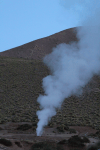

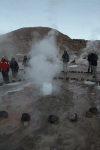
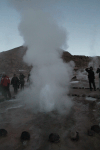





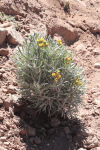

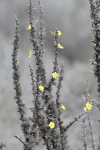

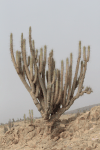

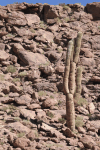
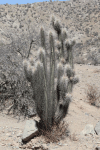
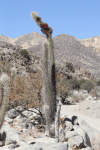
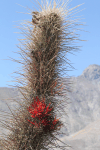
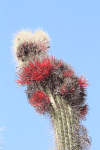






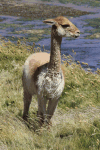


This page contains 48 pictures with 6 species
Page last updated on Sun Feb 20 14:05:08 2022 (Mountain Standard Time)
Nature in Chile on guenther-eichhorn.com